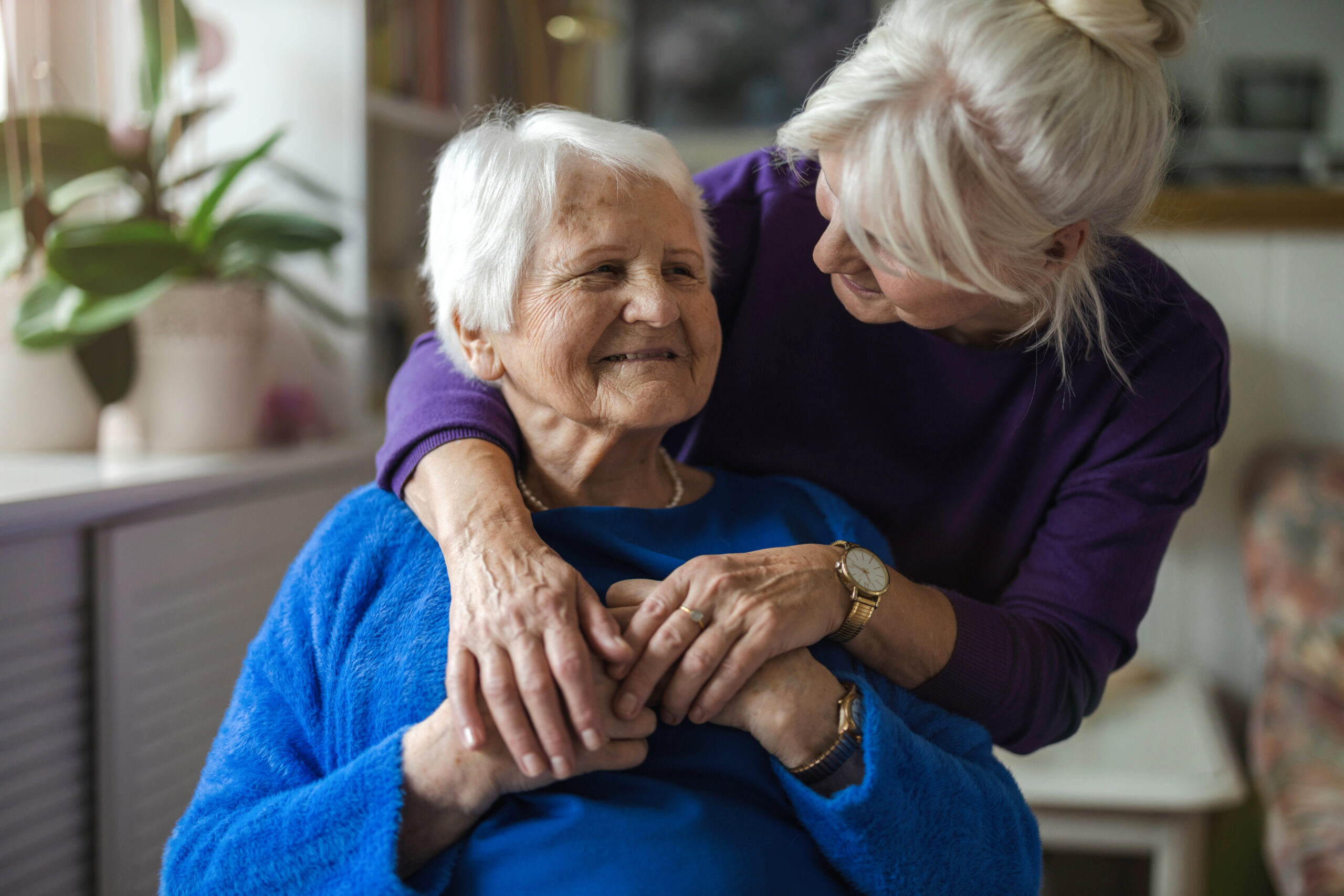Activities of Daily Living: A Checklist For What You Need to Know
We know you want only the best for your loved one. That's why talking to a professional about ADLs can help you ensure your loved one experiences a higher quality of life.

We understand that caring for a loved one can be overwhelming. Whether it’s helping them get dressed or preparing meals, knowing how to evaluate their needs is critical for providing the best support. By understanding Activities of Daily Living (ADLs) and Instrumental Activities of Daily Living (IADLs), you can take the first step in ensuring their safety, independence, and quality of life.
ADLs vs. IADLs: Key Differences
DLs and IADLs are closely related but serve different purposes when assessing an individual’s ability to live independently.
| ADLs | IADLs | |
| Definition | Basic physical self-care tasks | More complex, cognitive tasks |
| Examples | Bathing, feeding, dressing | Financial management, shopping, cooking |
| Importance | Essential for survival | Important for independent living |
Key Takeaway: Difficulty with ADLs often signals the need for immediate caregiving assistance, while struggles with IADLs may indicate a need for additional support to maintain independence.
What are Activities of Daily Living?
Activities of daily living (ADLs), as the name implies, are activities necessary for maintaining an independent lifestyle with a high quality of life. Most younger people are perfectly capable of performing these activities on their own. Those with disabilities or older adults may have a harder time completing ADLs independently, though.
ADLs serve as the foundation for evaluating an individual’s ability to live independently. Difficulty in performing these tasks often signals the need for caregiving support or assisted living services.

What are the 6 Basic ADLs?
The six basic activities of daily living are physical tasks necessary for maintaining independence:
Ambulating or Functional Mobility
The ability to move freely and safely, such as walking, transitioning from bed to chair, or climbing stairs.
Feeding
The ability to eat and drink independently.
Dressing
Selecting and putting on appropriate clothing.
Personal Hygiene
Managing personal grooming tasks, including bathing, brushing teeth, and maintaining cleanliness.
Continence
Controlling bladder and bowel movements.
Toileting
Getting to and from the restroom, using it correctly, and cleaning oneself afterward.
No matter your need, we have the right community for you. Get started finding the perfect new home for you or your loved one today!
Activities of Daily Living Checklist
Use this checklist to assess whether your loved one needs help with basic activities of daily living:
- Can they use the restroom independently?
- Can they move safely around their home (ambulating)?
- Are they able to feed themselves without assistance?
- Do they dress themselves appropriately for the weather or occasion?
- Is personal hygiene maintained (e.g., regular bathing, grooming)?
- Do they have control over bladder and bowel functions?

What Are Instrumental Activities of Daily Living (IADLs)?
Instrumental Activities of Daily Living (IADLs) go beyond basic physical care and include tasks that require higher-level cognitive and organizational skills. These activities are necessary for independent living and include responsibilities such as:
- Managing medications
- Preparing meals
- Shopping for groceries or other essentials
- Handling personal finances
- Maintaining the home (e.g., cleaning, laundry)
- Using communication tools like phones and emails
- Transportation or community mobility
What are the 12 Instrumental Activities of Daily Living?
According to the American Occupational Therapy Association (AOTA), the 12 Instrumental Activities of Daily Living include:
Care of Others
Providing care or assistance to another person.
Care of Pets
Looking after household pets, including feeding, grooming, and cleaning up after them.
Child rearing
Caring for and raising children.
Communication Management
Using tools like phones, emails, and other communication devices effectively.
Community Mobility
Safely navigating and traveling within the community, whether by driving or using public transportation.
Financial Management
Managing finances, including paying bills, budgeting, and handling bank accounts.
Health Management and Maintenance
Taking medications, scheduling medical appointments, and following healthcare recommendations.
Home Establishment and Maintenance
Cleaning, organizing, and maintaining a safe and functional living environment.
Meal Preparation and Cleanup
Preparing nutritious meals and cleaning up afterward.
Religious Observances
Participating in religious or spiritual activities.
Safety Procedures and Emergency Responses
Recognizing and responding to emergencies like fires or injuries.
Shopping
Recognizing and responding to emergencies like fires or injuries.
Instrumental Activities of Daily Living Checklist
Use this checklist to assess whether your loved one needs help with instrumental activities of daily living:
- Are they managing medications properly?
- Do they prepare and eat nutritious meals?
- Can they handle finances (e.g., paying bills, budgeting)?
- Is their home clean and organized?
- Are they able to shop for groceries or other essentials?
- Can they manage communication tools (e.g., phones, email)?
- Are they able to drive or use public transportation safely?
How Are ADLs and IADLs Assessed?
Professionals use standardized tools to measure an individual’s ability to perform ADLs and IADLs:
- Lawton IADL Scale – this scale is great for determining whether someone has higher or lower levels of functioning when performing IADLs
- Katz Index of Independence in ADLs – this scale helps determine a person’s ability to independently complete ADLs
These assessments help caregivers and healthcare professionals determine the level of support needed and plan for long-term care.
Why ADLs and IADLs Matter
Understanding your loved one’s ability to perform ADLs and IADLs is crucial for several reasons:
Care Planning: Assessing their abilities ensures they receive the right level of care, whether at home or in a senior living community.
Financial Assistance: ADL and IADL evaluations are often required to qualify for benefits from Medicare, Medicaid, or long-term care insurance.
Quality of Life: Supporting these activities enhances safety, dignity, and independence.
If your loved one struggles with any ADLs or IADLs, it may be time to consider professional caregiving or assisted living. Contact your local Area Agency on Aging (AAA) for support or consult with healthcare providers to explore options.
Does Your Loved One Need Help with ADLs or IADLs?
While many older adults crave the freedom that comes with independent living, the reality is that sometimes aging loved ones require some level of assistance on a daily basis. Impairment of ability to perform basic self-care activities like feeding oneself not only decreases quality of life, but also the safety of the individual. Familiarizing yourself with local Area Agencies on Aging (AAAs) — which are organizations that can address regional eldercare concerns — will help you better understand what options are available in your community.
We know you want only the best for your loved one. That’s why talking to a healthcare provider or even AAAs about ADLs can help you ensure your loved one experiences a higher quality of life.
Explore Frontier Senior Living Communities today to ensure your loved one receives the care and support they deserve. Look for a senior living community near you today.
Find a community near you
that perfectly fits your needs.
Nearby Communities
The Landing on Dundee Senior Living
156 West Dundee Road Wheeling, Illinois 60090 (224) 313-4547 Levels of Care:Assisted Living, Memory Care
The Reserve at Oswego
900 Douglas Road Oswego, Illinois 60543 (630) 608-0403 Levels of Care:Memory Care
The Brant at Oswego
101 Chapman Drive Oswego, Illinois 60543 (331) 216-1073 Levels of Care:Independent Living, Assisted Living, Memory Care



